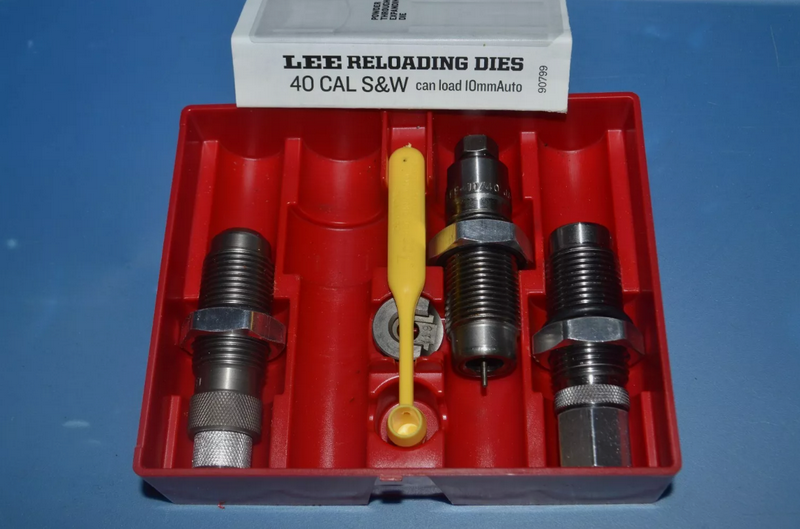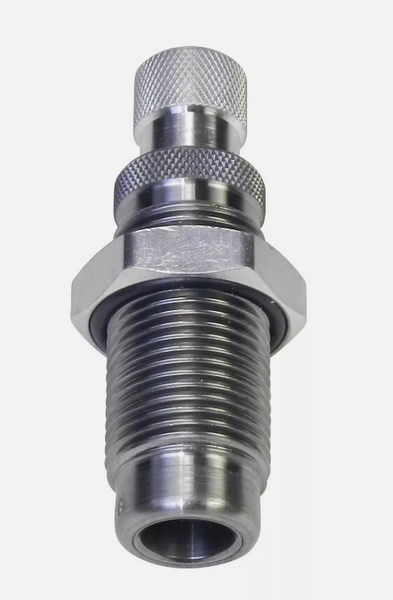Content Menu
● Introduction
● Understanding Lee Carbide Dies
● The 40 S&W Cartridge
● Components of the Lee Carbide 40 S&W Die Set
● Step-by-Step Reloading Process
>> Preparing Your Workspace and Materials
>> Sizing the Brass
>> Expanding the Case Mouth
>> Seating the Bullet
>> Crimping the Cartridge
>> Final Inspection and Testing
● Tips for Successful Reloading
● Conclusion
● Related Questions
>> Q1. What are the benefits of using carbide dies for reloading?
>> Q2. How do I know if my brass cases are suitable for reloading?
>> Q3. What is the importance of proper bullet seating depth?
>> Q4. Can I use Lee Carbide Dies for other calibers?
>> Q5. What safety precautions should I take when reloading ammunition?
Introduction
Reloading ammunition is a rewarding and cost-effective hobby for shooting enthusiasts. It allows shooters to customize their ammunition to suit their specific needs, whether for target practice, competition, or personal defense. One of the most critical components in the reloading process is the die set used to shape and prepare the brass cases. Among the various options available, the Lee Carbide 40 S&W Dies stand out for their quality and performance. This article will explore the features and benefits of these dies, the reloading process, and tips for achieving the best results.
Understanding Lee Carbide Dies
Carbide dies are a popular choice among reloaders due to their durability and efficiency. Unlike traditional steel dies, carbide dies are made with a hardened carbide material that provides several advantages. They are less prone to wear and tear, which means they can last significantly longer than their steel counterparts. Additionally, carbide dies require less lubrication, making the reloading process cleaner and more straightforward.
Lee Precision, a well-known manufacturer in the reloading industry, offers a range of carbide dies, including the 40 S&W die set. This set is designed specifically for the .40 Smith & Wesson cartridge, which has gained popularity among law enforcement and civilian shooters alike. The Lee Carbide 40 S&W Dies are engineered to provide precise sizing and bullet seating, ensuring consistent performance with every round.

The 40 S&W Cartridge
The .40 S&W cartridge was developed in the early 1990s as a response to the need for a round that offered a balance between the 9mm and .45 ACP. It was designed to provide the stopping power of a larger caliber while maintaining manageable recoil. The .40 S&W quickly gained traction among law enforcement agencies and civilian shooters, becoming a popular choice for self-defense and competitive shooting.
Reloading .40 S&W ammunition offers several benefits. First, it allows shooters to tailor their loads to their specific firearms and shooting styles. This customization can lead to improved accuracy and performance. Second, reloading can significantly reduce the cost of ammunition, especially for those who shoot frequently. Finally, the reloading process can be a fulfilling and educational experience, allowing shooters to gain a deeper understanding of their ammunition and firearms.
Components of the Lee Carbide 40 S&W Die Set
The Lee Carbide 40 S&W Die Set includes several essential components that work together to create high-quality ammunition. Each die serves a specific purpose in the reloading process:
- Full Length Sizing Die: This die is used to resize the brass cases to ensure they fit properly in the chamber of the firearm. It removes any bulges or imperfections that may have occurred during firing.
- Bullet Seating Die: This die is responsible for seating the bullet to the correct depth in the case. Proper bullet seating is crucial for achieving consistent performance and accuracy.
- Powder Thru Expanding Die: This die expands the case mouth to allow for easy bullet insertion. It also dispenses powder into the case, streamlining the reloading process.
- Carbide Factory Crimp Die: This die applies a crimp to the finished cartridge, ensuring that the bullet is securely held in place. A proper crimp can improve feeding and reduce the risk of bullet setback.
Each of these components plays a vital role in the reloading process, and together they create a comprehensive die set that meets the needs of .40 S&W reloaders.

Step-by-Step Reloading Process
Reloading ammunition can seem daunting at first, but with the right tools and knowledge, it becomes a manageable and enjoyable task. Here's a step-by-step guide to reloading .40 S&W ammunition using the Lee Carbide Die Set:
Preparing Your Workspace and Materials
Before starting the reloading process, it's essential to set up a clean and organized workspace. Gather all necessary materials, including:
- Lee Carbide 40 S&W Die Set
- Brass cases
- Bullets
- Powder
- Primers
- Reloading press
- Scale for measuring powder
- Safety glasses and hearing protection
Sizing the Brass
Begin by placing a brass case into the full-length sizing die. Ensure that the die is properly adjusted to resize the case to the correct dimensions. Once the case is in place, operate the reloading press to push the case through the die. This process will resize the brass and remove any imperfections.
Expanding the Case Mouth
Next, use the powder thru expanding die to expand the mouth of the case. This step is crucial for ensuring that the bullet can be seated easily. Adjust the die to achieve the desired expansion, and then operate the press to expand the case mouth.
Seating the Bullet
With the case prepared, it's time to seat the bullet. Place a bullet on the expanded case mouth and insert it into the bullet seating die. Adjust the die to achieve the correct seating depth, which is typically specified in the bullet manufacturer's data. Operate the press to seat the bullet firmly in the case.
Crimping the Cartridge
After seating the bullet, use the carbide factory crimp die to apply a crimp to the cartridge. This step ensures that the bullet is securely held in place and helps prevent issues during feeding. Adjust the die to achieve the desired crimp, and then operate the press to complete the process.
Final Inspection and Testing
Once all cartridges are reloaded, it's essential to inspect them for any defects. Check for proper bullet seating, crimping, and overall appearance. After inspection, it's a good idea to test a few rounds at the range to ensure they perform as expected.
Tips for Successful Reloading
To achieve the best results when reloading .40 S&W ammunition, consider the following tips:
- Maintaining Your Dies: Regularly clean and inspect your dies to ensure they remain in good condition. Proper maintenance can extend the life of your dies and improve performance.
- Common Mistakes to Avoid: Be mindful of common reloading mistakes, such as overcharging the powder or improperly seating the bullet. Always double-check your measurements and settings.
- Importance of Consistency and Precision: Consistency is key in reloading. Use the same components and techniques for each batch of ammunition to achieve uniform results.
Conclusion
Reloading with Lee Carbide 40 S&W Dies is an excellent way to enhance your shooting experience. These dies offer durability, efficiency, and precision, making them a valuable addition to any reloader's toolkit. By following the outlined steps and tips, you can produce high-quality ammunition tailored to your specific needs. Whether you are a seasoned reloader or just starting, the process can be both rewarding and educational.

Related Questions
Q1. What are the benefits of using carbide dies for reloading?
Carbide dies offer several advantages, including increased durability, reduced need for lubrication, and longer lifespan compared to steel dies. They provide consistent sizing and performance, making them a popular choice among reloaders.
Q2. How do I know if my brass cases are suitable for reloading?
Inspect your brass cases for signs of damage, such as cracks, splits, or excessive wear. If the cases are in good condition and have not been fired too many times, they are likely suitable for reloading.
Q3. What is the importance of proper bullet seating depth?
Proper bullet seating depth is crucial for achieving consistent performance and accuracy. Incorrect seating depth can lead to feeding issues, increased pressure, and reduced accuracy.
Q4. Can I use Lee Carbide Dies for other calibers?
While Lee Carbide Dies are designed for specific calibers, Lee offers die sets for a wide range of cartridges. You can purchase additional die sets for other calibers as needed.
Q5. What safety precautions should I take when reloading ammunition?
Always wear safety glasses and hearing protection when reloading. Work in a well-ventilated area, and keep all materials organized and out of reach of children. Follow all manufacturer guidelines and safety practices to ensure a safe reloading experience.
















